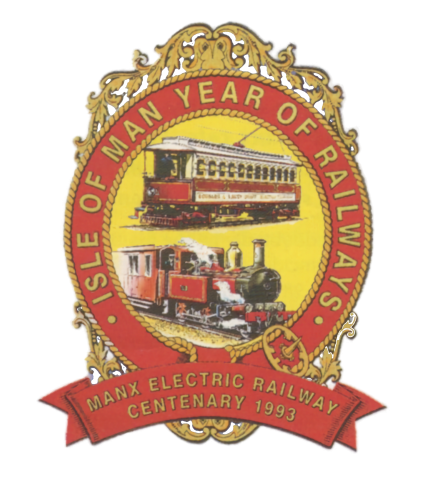NOTES
[1] 1992 sterling crisis) withdrawal from the European Exchange Rate Mechanism (ERM) and all that came with it…
[2] Alan Corlett was appointed coordinator of the fledgeling ‘Year of Railways’ and later oversaw a series of similar promotions until around 1998.
[3] ‘Great Escapes’ aimed at short break holidaymakers cost c£200,000 in 1992 and secured a claimed ’11’ bookings. (See below)
[4] The TT is promoted every year. The idea we should have to wait for anniversaries of 1907 is absurd !
[5] Especially Europe and North America; in the case of the latter, the concept and practice of the Electric Railway is particularly appealing as the MER uses much electrical equipment (motors, controllers, car trucks [bogies] and overhead equipment manufactured over 100-years-ago in the USA).
[6] Betty Hanson MLC served as the chairman and chief planner of the Tynwald's Millennium Committee celebrations in 1979. In the weeks prior to the celebration, Hanson traveled to the United States as chairman, where she was instrumental in the establishment of the North American Manx Awards.
[7] Odin's Raven is a ⅔ scale replica of the Gokstad ship, which was sailed from Trondheim to Peel, by a joint Manx and Norwegian crew. The project formed part of the 1979 Manx Millennium Celebrations, and was conceived and planned by local businessman Robin Bigland. MERS 1990 proposals (14.17) put forward plans to display MER Car No.2 at the Royal Dublin Show, Earls Court and the Birmingham Exhibition Centre, and visits to regional centres as an Isle of Man 'Tram show’..
[8] Reproduced in appendix i below
[9] Black Wednesday (or the 1992 sterling crisis) was a financial crisis that occurred on 16 September 1992.
[10] Sounds familiar? Manx Transport Review Issue 59 Spring 1991.
[11] See appendix iii
[12] The American General Electric Company, never to be confused with a similarly entitled and now defunct firm based in the UK and commonly known as GEC.
[13] USA population 331.9 million. So potential for quite a lot of ‘railfans’, then…
[14] The inclusion in 2023 of the definite article (the) is perhaps indicative of some parochial thinking and should be omitted in future. This tendency had to be repeatedly corrected thirty years ago as the then minister insisted on adding it to the original title in speeches and elsewhere.
See also appendix ii
[15] It was said that back in 1973/4 the old Isle of Man Railway Company wanted to get the centenaries of the steam lines ‘out of the way’ before announcing the closure of the Douglas-Castletown line to save money. NOTE History also records that subsequently ,’half the railway made twice the losses.’
[16] George Swales MHK (Ramsey) TYNWALD COURT, OCTOBER 17, 1979.
[17] TT Visitor Survey Department for Enterprise. It is perhaps also worth noting that the Year of Railways 1993 achieved half that figure in its first yea
[18] It is generally accepted that the TT (and MGP) earn their keep economically and justify the Manx government's annual expenditure promoting the event and providing the infrastructure (keeping the course up to spec and so on). TT 'income' is attributed to increased visitor numbers, visitor spend on travel, accommodation, food (drink) and services. The 2012 ECORYS (The Economic Impact of Heritage Railways in the Isle of Man) report set out to quantify the benefits to the Isle of Man economy of the Island's heritage railways by looking at similar indirect 'income' from increased visitor numbers, visitor spend on travel, accommodation, food, services and so on. Some critics of the heritage railways choose to look only at the gap between 'ticket sales' and government subsidy - ignoring the wider picture. Virtually no-one 'pays' (buys tickets) to spectate at the TT - fans simply turn up at the roadside; yet it is (rightly) seen as a net contributor the the Island's economy. The economic benefit of the railways should be looked at in a similar light...
[19] During the early 2000s under manager David Howard, winter services were reinstated charging bus fares allowing travel on either rail or road. Shelters with timetable cards were erected at many stops whilst in other places, request stops on the MER were marked with suitable signage. These changes met with Mr Howard’s aim to increase passenger numbers, though sadly without the promotions of the 1990s - perhaps seen as a hangover of his predecessor. See appendix iii
[20] The Y&R campaign used double-page colour spreads in Sunday supplements of the day to raise the profile of the Island among a more ‘up-market’ clientele. Had it been allowed to run for more than one winter, it may have succeeded. What it didn’t succeed in doing was drive requests for the tourist board’s own Colour Brochures from the Island’s returning and unfortunately literally dying regular clientele, and after just one season and pressure from politicians the campaign and its agency were dropped. The 1988 Travis/Dale ‘You’ll look forward to going back’ campaign was likewise dropped unceremoniously as the expensive TV spots in Granadaland and RTE could not be seen by Mannin Line callers who also failed to understand the tag line.
[21] For example In 1975, the Port Erin line operated only from its southwestern terminus to Castletown, but it was found that half a railway made twice the loss which is relevant to issues being considered in this report. Isle of Man Heritage Railways SAVE Review of Isle of Man Heritage Railways Report 2018 . Ditto the MER in 1976. The ongoing and inexcusable termination of the Horse Tramway on Central Promenade is another example of this. The horse line’s reconnection with its potential passengers in central Douglas at the Sea Terminal was agreed by Tynwald in response to public opinion and should be done without delay.






